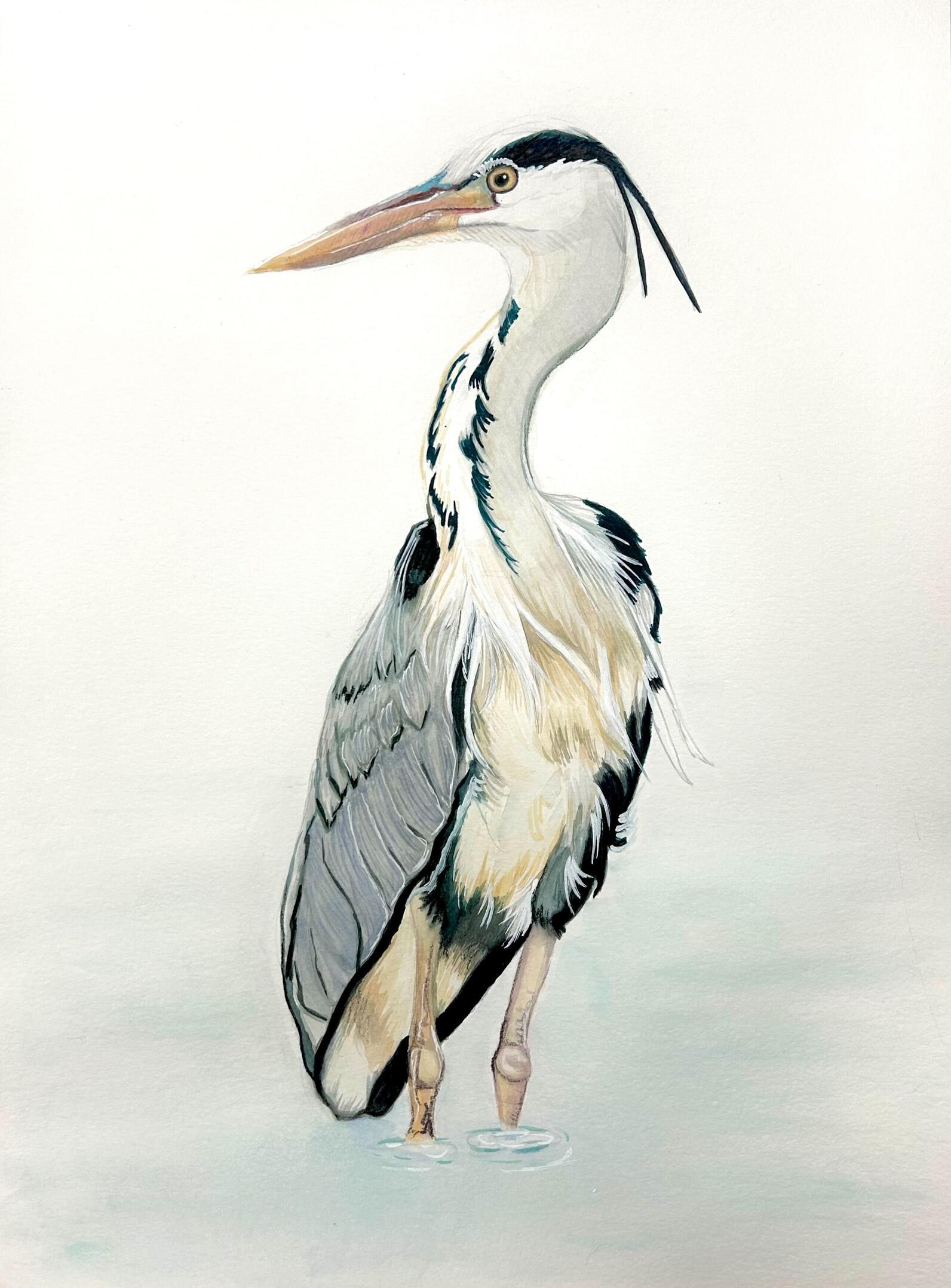Growing up, I had the privilege of visiting a variety of regions, each with its own range of unique characteristics. I was always enamored by the constantly changing nature around me and had the urge to draw my surroundings, whether it be the sturdy saguaros of the desert or the sandy shores of the coasts. Through my travels, I filled my sketchbooks with life from different regions of the country, but amidst the ever-changing landscapes that filled my canvases one species remained constant: the Great Blue Heron.
Whether stalking through a pond or spreading its impressive wingspan across the shoreline, the Great Blue Heron has a presence that does not require an advanced birding experience to appreciate. Every time the Great Blue Heron emerges itself, I feel a frenzied urge to trace its feathered head and mark the memory to paper forever.
Despite the Great Blue Heron being my favorite bird to paint, it is also the most difficult for me to capture. While other birds may flaunt vibrant colors or intricate patterns, the Great Blue Heron relies on subtle shades of gray and blue to blend seamlessly into its natural surroundings. There is something inherently artistic in the shape of the Great Blue Heron. Despite being such a tall bird, it moves gracefully, each step creating a continuous line that curves through the neck and flows through its feathered chest, finally sweeping through elongated legs. Such movements are due to a lightweight bone structure that allows the large Great Blue Heron to stand as tall as 52 inches and have a wingspan of almost 6 feet in length, and yet weigh as little as 5 to 6 pounds. Despite the enormous presence of the Great Blue Heron, capturing its likeness to paper requires light, ever-flowing brushstrokes that fade into the paper just as the bird’s feathering fades into its surroundings.

What I find most striking about the Great Blue Heron is its piercing gaze. Nestled between a bright orange beak and a noble navy feathering atop its head are burning amber eyes. The all-seeing heron has binocular vision about three times as detailed than a human’s, allowing it to zoom in on its prey and act with a lightning efficiency that conflicts with this giant’s seemingly gentle temperament.
Much like myself, the Great Blue Heron is drawn to riparian ecosystems, where aquatic and terrestrial habitats collide. From open shorelines to wooded ponds, these diverse habitats provide refuge for both the Great Blue Heron and myself. As a wildlife artist, I find solace in solitude, often traveling alone to ecological sites to sit for hours at a time painting the landscape before me or tramping on treasure hunts to photograph elusive species. No matter what part of the world I have found myself in- from the Midwest to the Galapagos Islands- the Great Blue Heron has remained a constant in the whirlwind of life. In a world of fleeting moments and constantly evolving landscapes, the Great Blue Heron has planted itself as steady as a statue in my life and in my heart. Its presence continues to inspire me, calling me to preserve the bird both in memory but also in numbers.
As much as I cherish the Great Blue Heron, its habitat is under threat. Wetlands, marshes, and shorelines- essential habitats for the heron- are incredibly sensitive to urban development and climate change. Our natural riparian ecosystems are disappearing, and with them, beloved species such as the Great Blue Heron.
Through conservation efforts, habitat restoration, and responsible land management, we can ensure that future generations can have the opportunity to experience the Great Blue Heron- whose presence has left a mark not only on myself, but throughout a spectrum of cultures.




